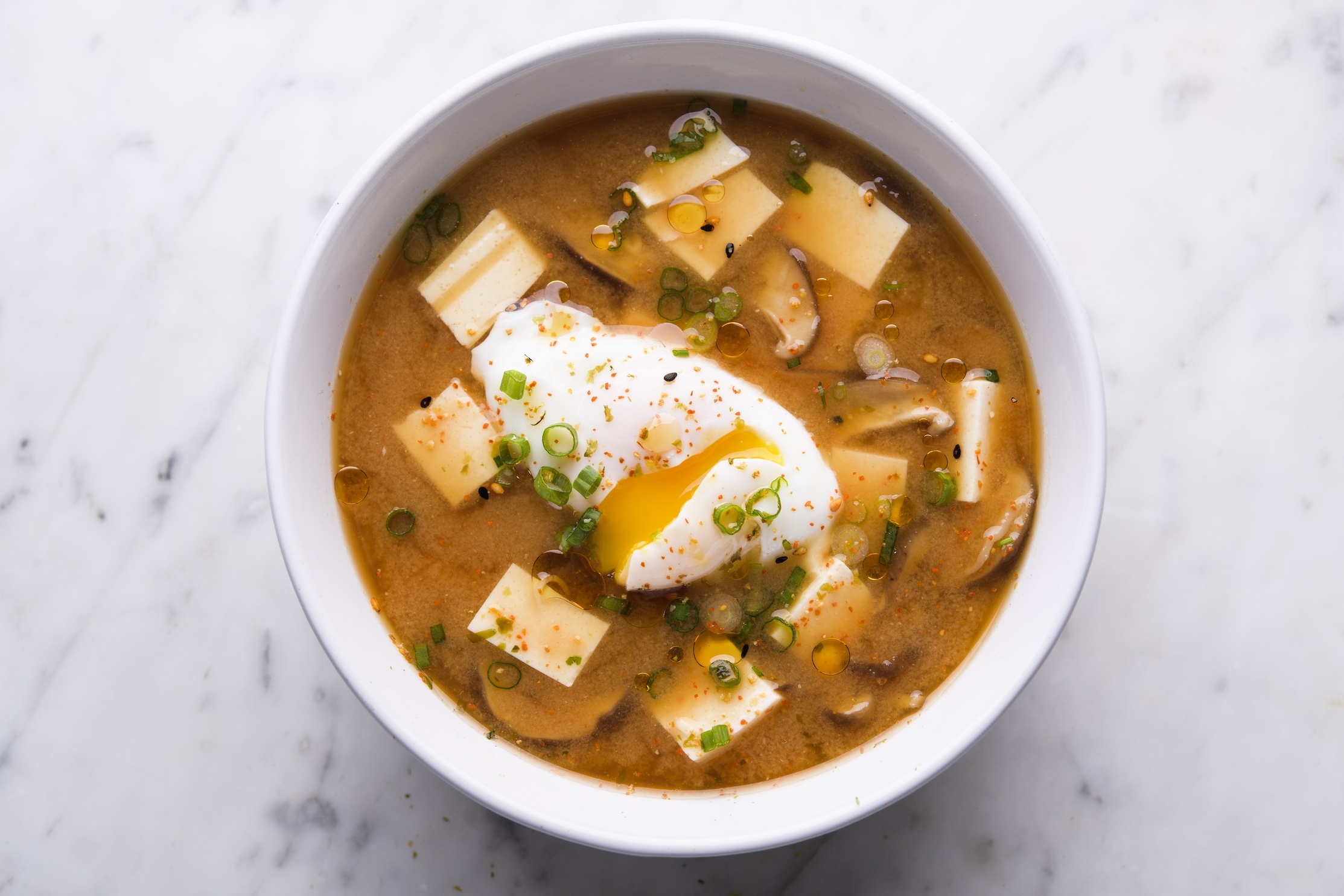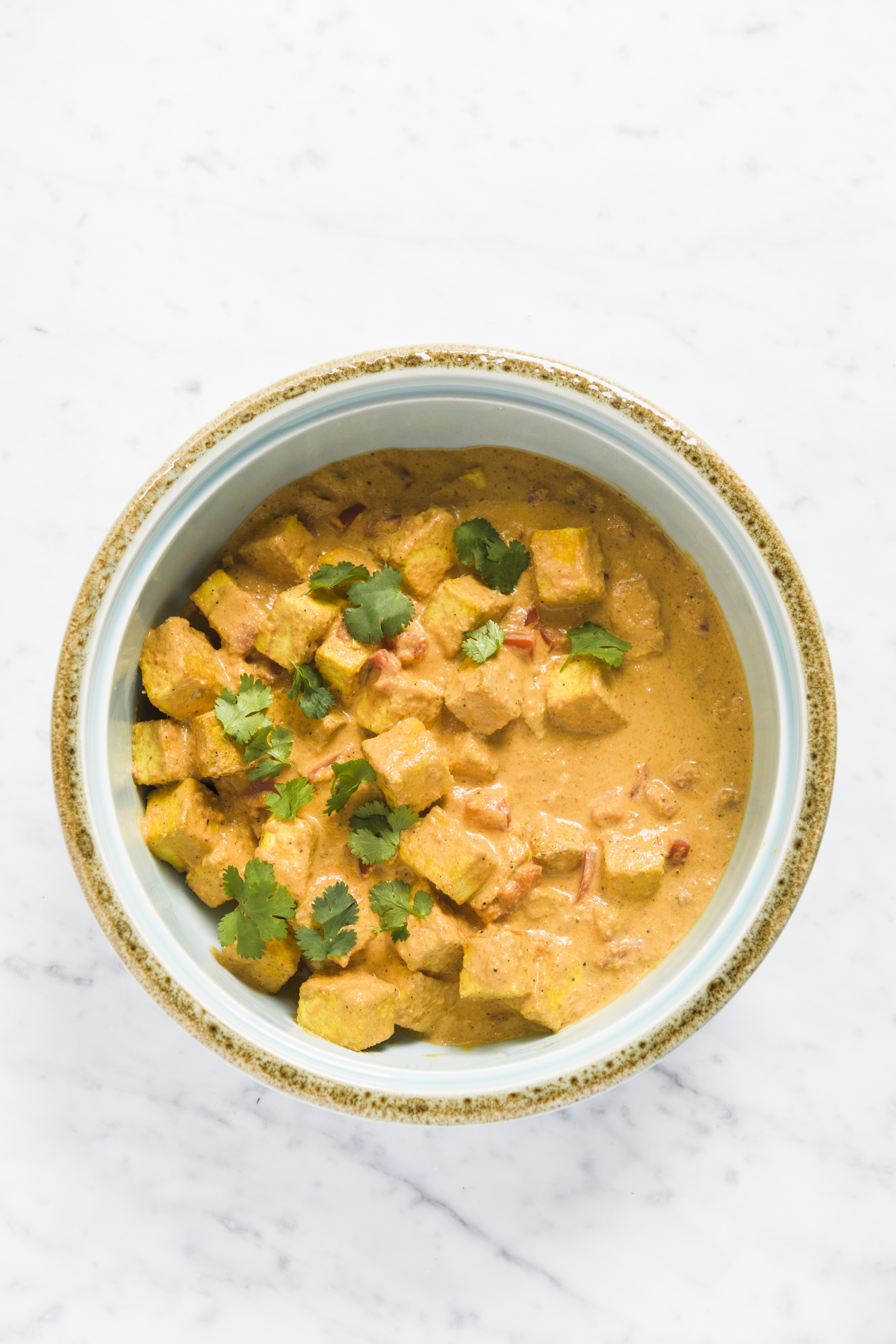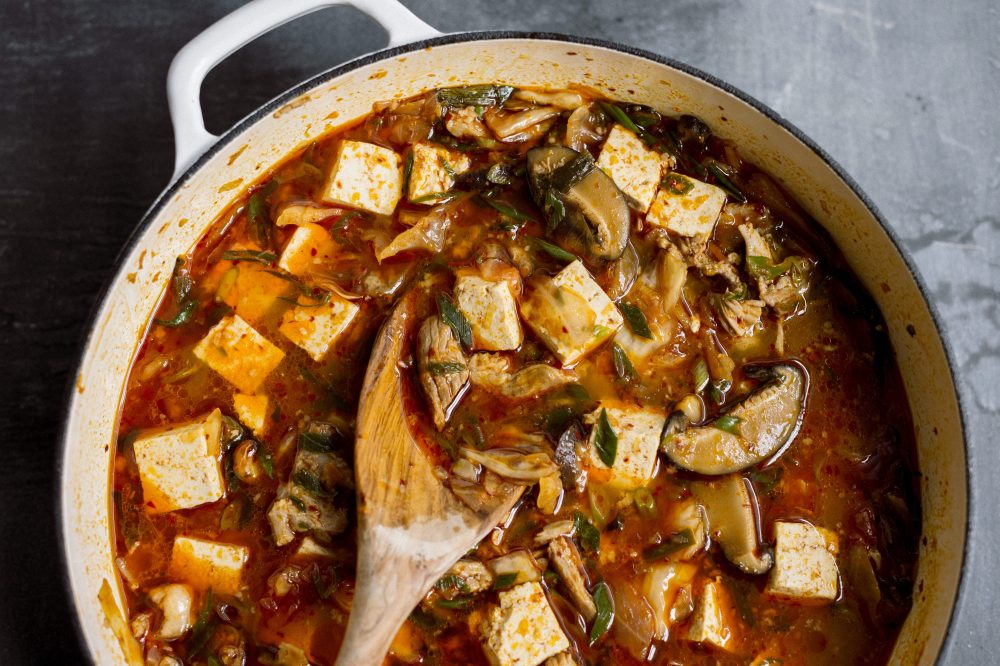Tofu’s reputation as bland or boring actually is its greatest asset. That’s because tofu has an impressive capacity for absorbing flavors and adapts easily to a broad range of soups, stews, stir-fries and more.
There are a variety of tofu styles, each suited to different dishes. Silken tofu, which is available in both shelf-stable and refrigerated packaging, is soft, creamy and best in soups, such as miso soup or our Korean Spicy Kimchi Soup. Or it can be pureed into sauces or salad dressings, as in our creamy Green Goddess Dressing, which is good on a hearty chopped salad, spread on toast and topped with smoked salmon and avocado, or scooped up with mixed crudités. We even like it as a sauce for roasted chicken or fish.
Silken tofu also is an essential ingredient in one of the Sichuan region’s most classic dishes, Mapo Tofu. Boldly flavored with loads of ginger, garlic, ground pork and toban djan (a spicy fermented bean paste, which is also sometimes written dobanjiang), the tofu soaks up the sauce. The dish’s intense flavor belies the minimal effort and time it takes to prepare the dish. Serve with plenty of rice to balance the heat and sop up the sauce.
Medium and firm tofus are best for stews and braising, while extra-firm works for stir-frying or grilling because it holds its shape and is less prone to sticking. Drain and cut the tofu into slabs, then blot dry with paper towels for the best browning and minimal sticking. Consider swapping it for chicken in your favorite stir-fry.
Also try dusting slabs of extra-firm tofu with salt, pepper, cornstarch and sesame seeds, then frying them until crisp in a well-oiled skillet. Drizzle with sesame oil and soy sauce and serve over wilted greens or stir-fried bok choy with ginger. I even grill or smoke slabs of extra-firm tofu thickly coated with salt, pepper, smoked paprika and garlic (and drizzled with olive oil), then sandwich them together with crispy coleslaw and pickles on a toasted roll.
Pro Tip
If you want extra-firm, extra-chewy tofu, slice it into slabs and freeze it. The process will pull out much of the excess moisture and firm up the texture. Defrost and blot dry before use.
More Recipes to Try:
Miso Soup with Shiitake Mushrooms and Poached Eggs

Other than fresh shiitake mushrooms and scallions, this soup requires only pantry staples. In a pinch, dried shiitake will taste fine, though reduce the volume to 2 ounces. Serve with shichimi togarashi or furikake seasoning.
In a large saucepan over medium, combine 4 smashed and peeled garlic cloves and 2 tablespoons tomato paste. Cook, stirring occasionally, until the tomato paste has browned, 2 to 3 minutes. Add 6 cups water, then whisk in ½ cup red or white miso. Bring to a simmer, then reduce to medium-low and cook, uncovered and stirring occasionally, for 5 minutes. Strain the broth through a fine mesh strainer set over a medium bowl. Return the broth to the pan; discard the solids in the strainer. Add 5 ounces of fresh, thinly sliced shiitake mushrooms and bring to a simmer over medium-high, then reduce to medium and cook, uncovered, until the mushrooms are tender, about 10 minutes. While the mushrooms cook, fill a 10-inch skillet with at least 1 inch of water and bring to a simmer over medium-high. Line a large plate with paper towels. Crack 4 large eggs into a small bowl or cup. One at a time, carefully tip the eggs into the water near the edge of the pan. Once all eggs have been added, cover the pan and turn off the heat. Let stand until the whites are set but the yolks are still soft, 3 to 5 minutes. Using a slotted spoon, gently transfer each egg to the prepared plate to drain. Add 14 ounces drained-and-cubed silken tofu to the broth and stir gently. Ladle the soup into bowls, adding cooked white rice if you like, and top each serving with a poached egg. Sprinkle with thinly sliced scallions and drizzle lightly with toasted sesame oil.
Lemon Grass-Coconut Tofu

To make the dish vegetarian, substitute an equal amount of soy sauce for the fish sauce. Serve with steamed jasmine rice.
In a medium bowl, stir together 1 teaspoon turmeric, 2 teaspoons kosher salt and ½ teaspoon pepper. Add two 14-ounce containers extra-firm tofu (cut into 1-inch cubes and patted dry) and toss. Set aside. In a blender, combine 2 cored-and-quartered plum tomatoes, 1 chopped shallot, the stems from 1 bunch cilantro (reserve the leaves) and 1 tablespoon each fish sauce and chili-garlic sauce. Blend until finely chopped, about 30 seconds. Add 3 stalks lemon grass, trimmed to the lower 5 inches (dry outer layers discarded and thinly sliced) and blend, scraping the blender jar frequently, until a smooth, thick paste forms, about 90 seconds. Set aside. In a 12-inch nonstick skillet over medium-high, heat ¼ cup neutral oil until shimmering. Add the tofu in an even layer and cook without stirring until well browned on the bottoms and the pieces release easily from the pan, about 3 minutes. Using a spatula, turn the pieces and cook until browned on all sides, another 7 to 9 minutes. Transfer to a large paper towel–lined plate. Return the skillet to medium-high. Add the tomato–lemon grass paste and cook, stirring, until slightly darkened and thickened, 2 to 3 minutes. Stir in one 14-ounce can coconut milk, 1 teaspoon salt, ½ teaspoon pepper and 2 diced tomatoes. Bring to a simmer then cover, reduce to low and cook until the tomatoes soften, about 5 minutes. Add the tofu and stir to coat. Cover and simmer, stirring occasionally, until the tofu has absorbed some of the sauce, about 10 minutes. Stir in and sprinkle with reserved cilantro leaves before serving.
Sign up for our newsletter to get more tips on batch cooking.
Join the conversation on Facebook, Twitter, Instagram and Pinterest.




